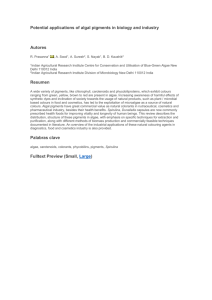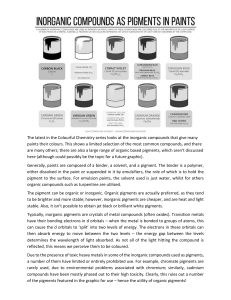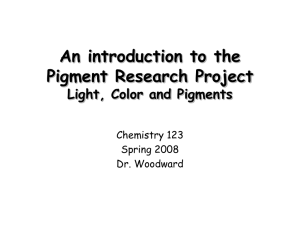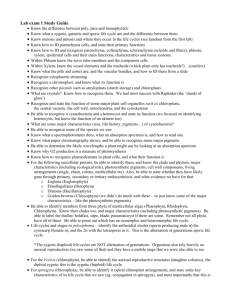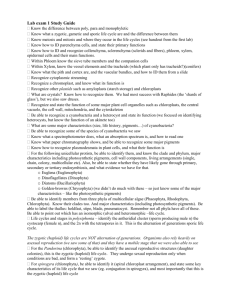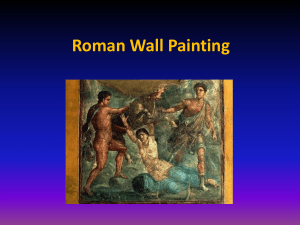Cavallo and Gianoli Borioni - Associazione Italiana di Archeometria
advertisement
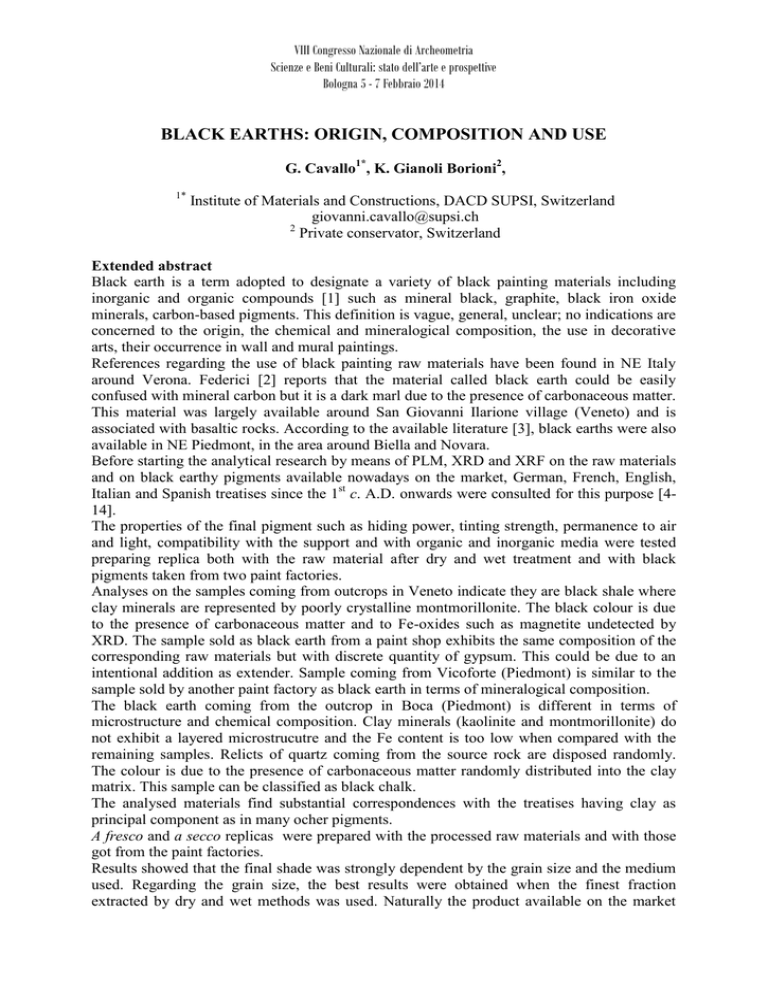
VIII Congresso Nazionale di Archeometria Scienze e Beni Culturali: stato dell’arte e prospettive Bologna 5 - 7 Febbraio 2014 BLACK EARTHS: ORIGIN, COMPOSITION AND USE G. Cavallo1*, K. Gianoli Borioni2, 1* Institute of Materials and Constructions, DACD SUPSI, Switzerland giovanni.cavallo@supsi.ch 2 Private conservator, Switzerland Extended abstract Black earth is a term adopted to designate a variety of black painting materials including inorganic and organic compounds [1] such as mineral black, graphite, black iron oxide minerals, carbon-based pigments. This definition is vague, general, unclear; no indications are concerned to the origin, the chemical and mineralogical composition, the use in decorative arts, their occurrence in wall and mural paintings. References regarding the use of black painting raw materials have been found in NE Italy around Verona. Federici [2] reports that the material called black earth could be easily confused with mineral carbon but it is a dark marl due to the presence of carbonaceous matter. This material was largely available around San Giovanni Ilarione village (Veneto) and is associated with basaltic rocks. According to the available literature [3], black earths were also available in NE Piedmont, in the area around Biella and Novara. Before starting the analytical research by means of PLM, XRD and XRF on the raw materials and on black earthy pigments available nowadays on the market, German, French, English, Italian and Spanish treatises since the 1st c. A.D. onwards were consulted for this purpose [414]. The properties of the final pigment such as hiding power, tinting strength, permanence to air and light, compatibility with the support and with organic and inorganic media were tested preparing replica both with the raw material after dry and wet treatment and with black pigments taken from two paint factories. Analyses on the samples coming from outcrops in Veneto indicate they are black shale where clay minerals are represented by poorly crystalline montmorillonite. The black colour is due to the presence of carbonaceous matter and to Fe-oxides such as magnetite undetected by XRD. The sample sold as black earth from a paint shop exhibits the same composition of the corresponding raw materials but with discrete quantity of gypsum. This could be due to an intentional addition as extender. Sample coming from Vicoforte (Piedmont) is similar to the sample sold by another paint factory as black earth in terms of mineralogical composition. The black earth coming from the outcrop in Boca (Piedmont) is different in terms of microstructure and chemical composition. Clay minerals (kaolinite and montmorillonite) do not exhibit a layered microstrucutre and the Fe content is too low when compared with the remaining samples. Relicts of quartz coming from the source rock are disposed randomly. The colour is due to the presence of carbonaceous matter randomly distributed into the clay matrix. This sample can be classified as black chalk. The analysed materials find substantial correspondences with the treatises having clay as principal component as in many ocher pigments. A fresco and a secco replicas were prepared with the processed raw materials and with those got from the paint factories. Results showed that the final shade was strongly dependent by the grain size and the medium used. Regarding the grain size, the best results were obtained when the finest fraction extracted by dry and wet methods was used. Naturally the product available on the market VIII Congresso Nazionale di Archeometria Scienze e Beni Culturali: stato dell’arte e prospettive Bologna 5 - 7 Febbraio 2014 gave best results due to the industrial process able to control the grain size homogeneity. Another important evidence is the partial instability of the raw materials to air and sunlight probably due to the fact that carbonaceous material, if not well carbonized, can turn to greyish or brownish due to the oxidation of the tarry material [15]. This behaviour, also noted in the case of charcoal black, was not observed on the materials sold by the paint factories - even if the composition is very similar to the raw materials - probably due to the addition of stabilizers. Written sources indicate that these materials are usable in all the pictorial techniques but no evidences were found till now in murals and wall paintings due to the fact that it is very difficult the detection and that can be confused with other carbon based pigments. The application of the materials in different pictorial techniques demonstrates that black earths have generally good properties as reported in the consulted texts. References [1] Winter J., West FitzHugh E., 2007 Pigments based on carbon In: Artist’s pigments, vol 4, Berrie B editors; 2007. 1-37. [2] Federici F., 1948 Materiali utili del suolo e del sottosuolo della provincia di Verona, La Tipografica Veronese, Verona. [3] Scarzella G. P., Natale P., 1989. Le terre coloranti e tinte naturali a base di terre, Torino. [4] Luzzato L, Pompas R., 1988 Il significato dei colori nelle civiltà antiche, Bompiani, Milano. [5] Plinio Secondo Caio, 1984 Naturalis Historia, XXXIII-XXXVII, Ed. Giardini, Pisa. [6] Cennini, 1821 Trattato della pittura messo in luce la prima volta con annotazioni dal Cavaliere Giuseppe Tambroni, Ed. Co’ Torchj, Roma. [7] Vasari G. 1832 Le opere di Giorgio Vasari pittore e architetto aretino, Ed. David Passigli e Socj, Firenze. [8] De la Hire M., 1730 Memoire de l’Academie Royale des sciences depouis 1666 jusqu’à 1699, IX, Ed. Par la Compagnie des Libraires, Paris. [9] Araus D. P., 1766 Seminario economico compuesto de noticias practicas, curiosas y eruditas de todas Ciencias, Artes, Oficios, Ed. Imprenta de Andrés Ramirz, Madrid. [10] Lewis W., (1766) Historie der farben. Ertse Abtheilung, von den Schwarzen Farben, Ed. Ben Heidegger und Companie, Zürich. [11] Wallerio J G 1778 Systema mineralogicumI, Ed. Officina Krawsiana, Vindobonae. [12] Mouchon P., 1779 Encyclopedie ou Dictionaire raisonné des sciences, des art et de métiers, Ed. Pellet L, Geneve. [13] De Castro Palomino 1795 El museo pictorico y escala optica., I, Ed. Imprenta de Sancha, Madrid. [14] Tilloch A., 1803 The Philosophical magazine, XV, Ed. Tilloch A, London. [15] Odin G. S., Desprairies A., Fullagar P. D., Bellon H., Decarreau A., Fröhlich .F, Zelvelder M., 1988 In: Green Marine Clays, Developments in sedimentology, 45, Odin G S editor Elsevier, Amsterdam.
